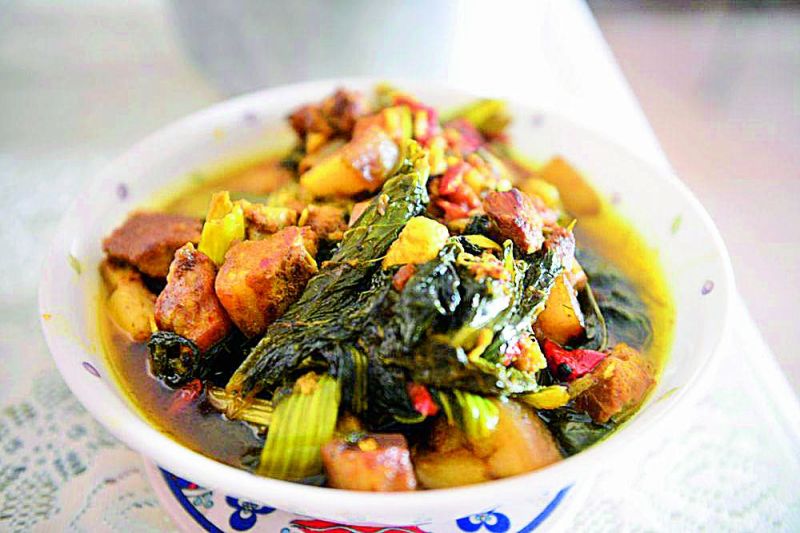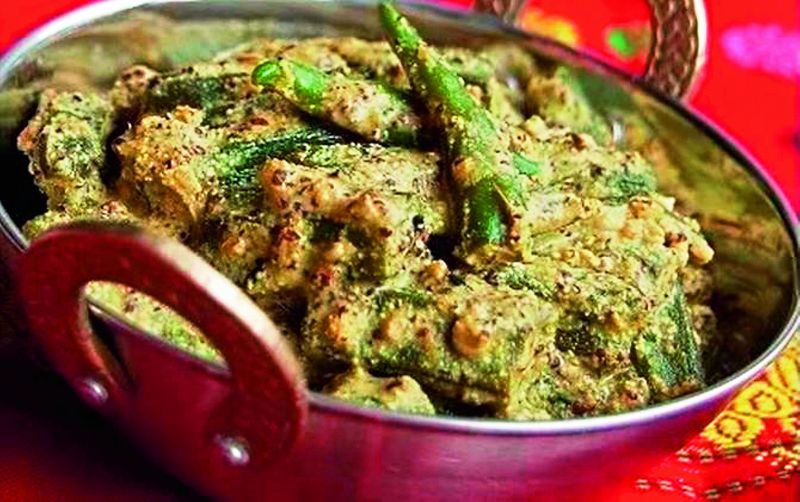A taste of Assam
An often misunderstood cuisine, assamese cooking involves the use of simple herbs and spices.
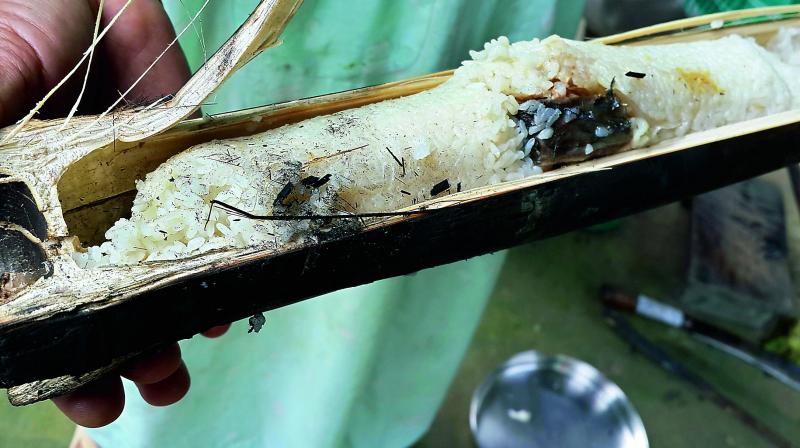
There is more to Assamese cuisine than maas tenga, khar and momos. This cuisine is heavily inspired by the various tribal communities. The mainstream Assamese cuisine borrows from West Bengal and Odisha.
For instance, you will find that fish is cooked in mustard sauce, mustard oil and tomatoes are used as flavouring agents, and panchporan is one of the primary spices in the cuisine. What differentiates the tribal cuisine is the use of ingredients of what is available; the dishes make use of simple ingredients like local greens (jute leaves, for instance), bamboo shoots and fermented leaves.
There is very little room for garam masala in tribal cuisine. Herbs are used as main spices. Additionally, garlic, ginger, onion, Sichuan pepper and fenugreek seeds are used. In mainstream dishes, a fair amount of cinnamon, cardamom and chillies are used to cook special meat or fish dishes.
The tribal communities take full advantage of nature’s bounty. Pork is the preferred meat as pigs are reared and slaughtered in the villages. Freshwater fish from nearby ponds are widely consumed. These tiny fish are pounded with colocasia leaves, stored in bamboo hollows and then cooked over wood fire. In fact, fish was also used for soups or broths. Baked fish in plantain leaves is another delicacy.
Meat and fish were regularly sundried to store and consume it through out the year. Interestingly, the consumption of pork in mainstream Assamese cuisine, has gained momentum only in the recent times. The tribals are open to pork, local chicken, duck and goose over mutton.
Earlier, where I come from, the Sonowal Kachari tribe in Upper Assam (Dibrugarh), consuming pork was not positively looked upon. The pork seller would sell a ‘little away’ from the main market. Interested customers would throw a bag with a chit informing how many kilos of pork were needed. Pork, in the village homes, was left to smoke above the souka/chulha which would be then consumed easily throughout the year. Lai Xaak aru Gahori or pork cooked with lai xaak or broad mustard greens, is a popular winter dish wherein mustard greens is the star ingredient. The dish, which has many variations going by the tribes, is what I call a marriage made in heaven.
Assam is a rice-eating state, and it is prepared in a variety of ways. In the hinterland, farmers often eat rice for the breakfast since it is high in carbohydrates and keeps hunger at bay for a longer time. Black rice, which is one of the ‘superfoods of 2016’, is grown abundantly in Assam.
Though folks back home don’t understand what the fuss is all about! It is used to make kola bora paokh, which is a sticky rice pudding. It is said that the food served will tell you a lot about your ‘guest tag’. No wonder then, duck and goose meat curries are only served to someone important, like the family of a prospective groom or at special family gatherings. Duck or goose is cooked with ashgourd (although ashgourd might not exactly be everyone’s favourite vegetable) or potatoes or banana stem in masalas over woodfire. This is then slow-cooked for about two hours. This hearty dish can change one’s perception about the melon.
While there is an increasing interest in Assamese cuisine, there is still very little knowledge about the cuisine. There is a perception that the North East consumes anything that crawls — it’s high time we change this view by educating ourselves about it.
Sunga Bhat
Ingredients
2 cups of rice
2 bamboo hollows
500 ml water
Banana leaves
Method
Soak the glutenous rice for three-to-four hours.
Clean a bamboo hollow.
Stuff the bamboo hollow with soaked rice and little water.
Close the mouth of the bamboo hollow with banana leaves and cook over the fire for about one hour.
Keep rotating the bamboo so that it cooks evenly.
Cut the bamboo into two.
Your sunga bhat is ready.
Serve with hot milk or chicken curry. Alternatively, you can also stuff fish or pork with the rice in the bamboo hollow.
Gahori Lai Xaak
Ingredients
1 kg boiled pork
500 gm lai xaak/mustard leaves
2 chopped onions
2 tbsp ginger-garlic paste
2 tomatoes, chopped
Salt to taste
1 tsp turmeric
Green chillies, as required
3 tbsp mustard oil
500 gm mustard leaves
Method
Heat the mustard oil and sauté the onions and then add ginger-garlic paste. To that add tomatoes and the boiled pork.
Add salt and turmeric and let it cook for 15 minutes. Now, add the mustard leaves, cover the bowl and cook for another 20 minutes. Continue stirring in between. Allow the water to dry if there is any.
The dish is ready to be served as a starter with rice wine or main course.
Bhendir Sorsori
Ingredients
4 cups bhendi/okra, halved
2 tbsp oil
2 tbsp thick mustard paste (a paste of soaked mustard seeds)
1 tsp ginger paste
2 green chillies, slit
1 whole red chilli, halved
1 bay leaf
½ tsp panch phoron
¼ tsp turmeric powder
Salt to taste
Method
Heat oil. Splutter panch phoron, bay leaves and red chillies.
Add bhindi and stir-fry. Add turmeric powder and cook for 10 minutes. Keep stirring in between.
Add mustard paste, ginger paste and green chillies. Continue stirring. Cook on low heat for about five minutes till gravy thickens.
Remove bhendi when it is coated with mustard paste.
Serve bhendir sorsori hot with roti.
Twenty Nine, Mumbai.
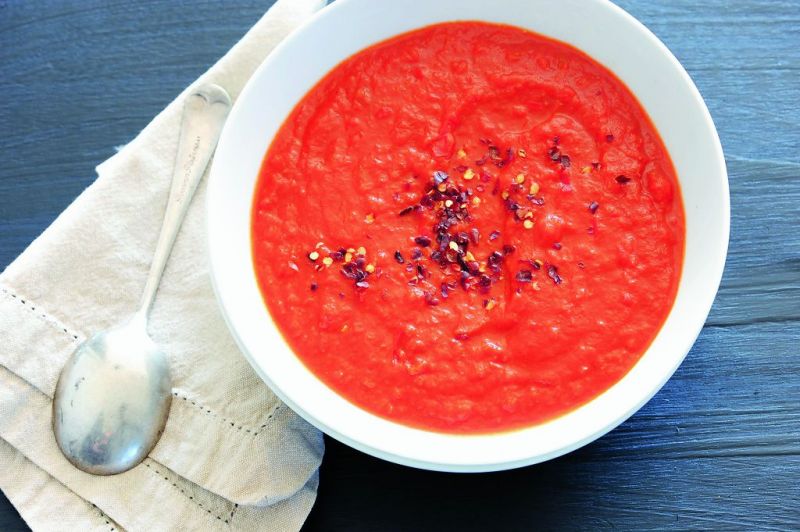 Baghari Turai aur Chane ki Dal.
Baghari Turai aur Chane ki Dal.
Baghari Turai aur Chane ki Dal (Split Bengal gram and ridged gourd curry)
Ingredients
1 cup split Bengal gram or chana dal
2 tsp canola oil
2 yellow onions, finely sliced
2 tomatoes, finely chopped
1 tbsp salt
1 tbsp red chilli powder
¼ tsp turmeric
2 tbsp cilantro, finely chopped
3 green chilies, each slit into two
3 medium-sized ridged gourd or turai
Method
Soak the chana dal overnight in cool water. The next day, drain and rinse the dal.
In a saucepan, add the drained dal along with two cups of fresh water and one tsp salt. Boil until the dal is just soft, but not mushy. Once done, remove the saucepan from heat and keep aside.
Meanwhile, wash the turai under water. Pat dry with towels. Peel and discard the skin. Chop and discard the two ends and cut into quarters. Keep it aside.
In a pressure cooker at medium heat, add oil. As soon as it warms up, add the sliced onions and stir-fry for five minutes. Once the onions are soft, add the chopped tomatoes, red chilli powder, salt, turmeric, cilantro, green chillies and stir well.
Cover with a lid and let it cook for three minutes. Add the chopped turai, and half-cup of water and pressure-cook it for around five minutes.
Add the chana dal with its water to the pressure cooker and cover it ajar with a lid, and let it cook at medium heat for 10 more minutes or until the turai is tender.
Your split Bengal gram and ridged gourd curry is ready.
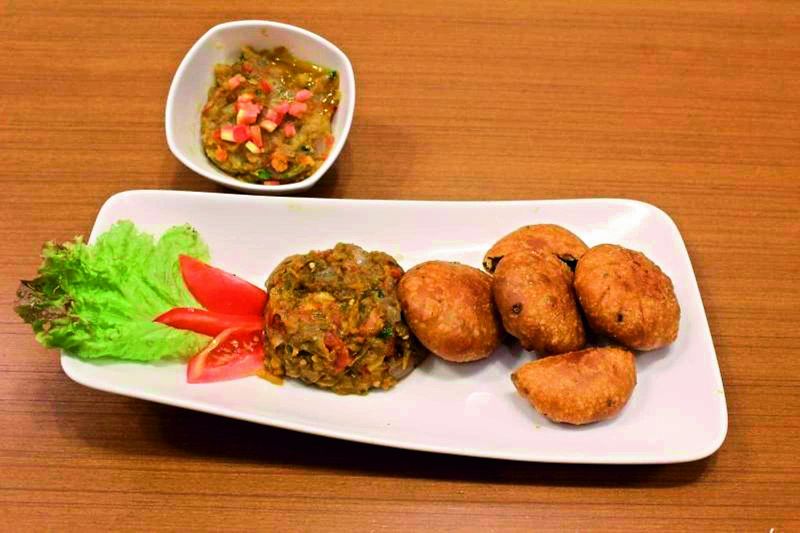 Potato chops with Sanmeholi chutney.
Potato chops with Sanmeholi chutney.
Potato chops with Sanmeholi chutney
For the Sanmeholi chutney (Assamese green chutney)
Ingredients
1 small bunch coriander leaves
1 small bunch mint leaves
A few sprigs of curry leaves
25 gm of garlic
2 to 5 green chillies
8 pieces kokum
½ tsp sugar
Salt to taste
Method
Wash all the leaves and drain them. Peel the garlic cloves and wash them.
De-seed the chillies.
Wash and soak the kokum in a little water for ten minutes.
Grind together the leaves, garlic, chillies, kokum, sugar and salt.
Your sanmeholi chutney is ready.
Recipes Courtesy: Gitika

